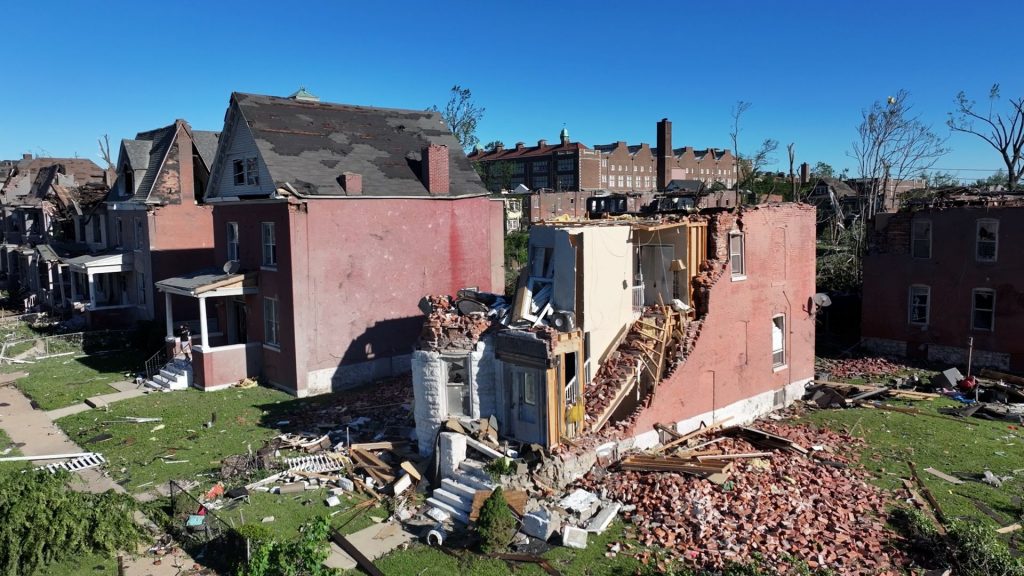Beyond the clouds: What really goes into weather forecasting?

The National Weather Service (NWS) has seen significant budget cuts under the Trump administration, raising concerns about its ability to provide life-saving forecasts. The service’s regional offices play an integral role in warning the public about dangerous weather.
Reports show the NWS warned residents 90 minutes prior to July’s deadly floods in Kerrville, Texas. In St. Louis, Missouri, the local office sounded the tornado alarms well ahead of the F3 tornado that struck St. Louis on May 16. Five people died in that storm.
On the ground with an NWS meteorologist
Following the St. Louis tornado, Kevin Deitsch, a meteorologist at the St. Louis NWS regional office, said seeing the destruction is tough. “It’s sobering, you know. It’s something you don’t want to see… but at the same time, we’re saving lives.”
During the May tornado, the St. Louis office mobilized all 25 of its employees, doubling the staff in each critical role –– radar, warning systems, flood monitoring and media communications –– to ensure accuracy.
“It’s really important to have two people to check each other and make sure that we’re not missing anything,” Deitsch told Straight Arrow News. The NWS staff also conducted post-storm damage surveys to help determine the community’s eligibility for government aid.
In addition to storm response, the St. Louis NWS provides weather forecasts for six local airports, including Lambert-St. Louis International Airport, where forecasts are updated every three hours. Accurate information about wind, visibility and cloud height is essential for aviation safety.
The NWS also supports public safety at community events.
“You might be at a concert, have no idea that the National Weather Service is involved. We’re keeping an eye on it,” Deitsch said. For larger gatherings, a meteorologist may be on site to coordinate with officials and facilitate evacuations if necessary.
NWS meteorologists earn a starting salary of $30,000, with a cap of around $100,000 for senior staff. According to the Bureau of Labor Statistics, the average American earns $62,000 annually.
“This is not a job. This is a passion, it’s a calling,” Deitsch added.
Automation and artificial intelligence have started to assist with forecasts, but Deitsch emphasized the value of human expertise.
“It’s the human judgment that matters most … like coordinating with road crews during a snowstorm or deciding when to call in the National Guard for disaster cleanup.”
Protecting the NWS
U.S. Rep Mike Flood, R-Neb., has advocated for maintaining the NWS as a core public safety agency within the federal government.
“It is one of the most trusted agencies by Americans, in this era of very divisive, divisive issues,” Flood told Straight Arrow News.
He introduced the bipartisan Weather Workforce Improvement Act, which would allow the NWS to hire staff based on public safety needs and help protect jobs threatened by federal budget cuts. The bill comes after many NWS positions were eliminated following cuts by the Department of Government Efficiency (DOGE).
“We take accurate weather forecasting for granted, because we’ve had it so good for so long … We need to make sure we’re investing,” Flood said. “We have the best radar and we have the best technology.”
The Weather Workforce Improvement Act, House Referendum 3809, is currently being considered by the House Science, Space and Technology Committee.
For NWS meteorologists, the mission is deeply personal.
“There are still people my age that don’t know what they want to do for a living. I’ve known since I was a kid,” Deitsch said. “So I get to do my hobby as a job. It’s pretty awesome.”





